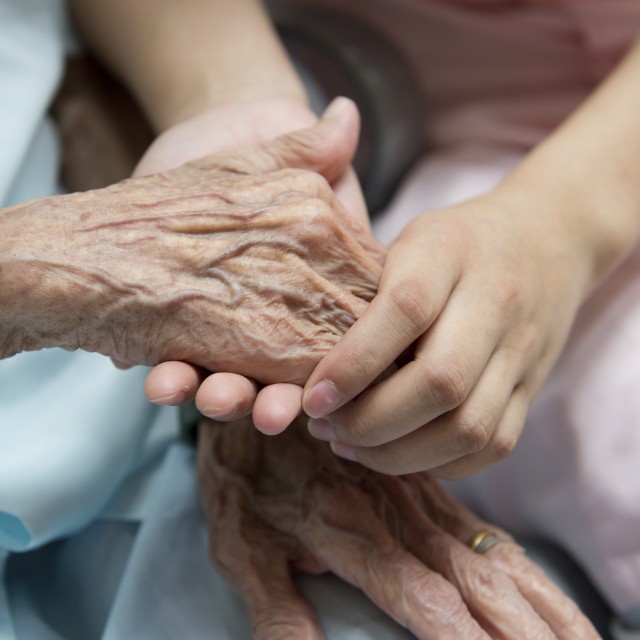While the medical system is largely focused on cure and safety, Chernof argues that there should be new metrics. Including those that measure things like functioning and ability to accomplish things by oneself.
Chernof argues that there should be new measures. Including markers for ability levels and independence.
“There are basic functions,” Chernof says, “like dressing, bathing, feeding, and toileting. And then there are instrumental functions like transportation and cooking.”
He says it is very important to go beyond medical diagnoses and to start collecting data on functioning.
“Chasing a blood sugar level to perfection in a 90-year-old who has outlived three primary care doctors and really just wants to wake up and have a donut with their coffee — we need to work with that,” says Chernof.
Chernof says complicating the long term care situation in California is the fact that this is a very diverse state.
“The situation in rural California looks very different than in San Francisco or the East Bay. 'One size fits all' solutions will be problematic because this looks different in different communities,” says Chernof.
In 2014, Chernof’s Scan Foundation and the Commonwealth Fund produced a scorecard on long term care capacity that was compiled by the AARP’s Public Policy Institute. It was the second annual scorecard and ranked states on criteria like affordability and access, choice of setting and provider, quality of life and quality of care, and support for family caregivers.
California ranked ninth in the U.S. According to the report that makes it “a leading state in an imperfect system.”
How can California raise its score further?
California gets its highest rank on the scorecard (#2 in the U.S.) for offering people choice. Many older Americans prefer not to enter institutionalized care as they age. Recognizing that, California spends more Medi-Cal funding on services that allow people to stay in their homes versus on institutional care. Here, 56 percent of all Medi-Cal long term service dollars go to the community. Still, the state lags behind top-ranked New Mexico where 65 percent of Medicaid long term care dollars go to the community.
San Francisco, itself, has a national model in this area: PACE -- Program of All-inclusive Care for the Elderly. The program is centered on the idea that it is better for individuals over 55 with chronic conditions to live in their communities rather than in institutions. PACE was pioneered at the city’s On Lok Lifeways center and has now been incorporated as a model in the national Medicare program.
On the flip side, California does not rate so well when it comes to quality of life and quality of care, and for the support it offers family caregivers.
One disturbing statistic as far as quality measures in the state is around bedsores. The report found the rate of pressure sores among California’s nursing home residents is double that of Hawaii, the best-performing state.
There are nearly six million unpaid caregivers in the state, mostly family and friends. Their contributions to care are valued at nearly $47 billion annually. California offers 12 weeks per year of job protected leave which is the minimum established by the federal Family Medical Leave Act. Meanwhile top-ranked Washington, D.C. provides 16 weeks family leave and 16 weeks of medical leave every two years.
Finally the report also suggests that California could safely transition many more individuals from institutional settings to the community. Eleven percent of California nursing home residents have low-care needs as compared to 1 percent in Maine, the top-ranked state. The benefits of making this transition happen include higher qualities of life and reduced costs.
The scorecard recognizes that the state is undergoing a huge transition -- moving many seniors who are eligible for both Medi-Cal and Medicare into a new program called Cal MediConnect that is receiving mixed reviews.
With the number of adults in the state over 65 expected to double between 2000 and 2030, experts say now is the time to get this issue right.
Rachel Dornhelm wrote this story through a journalism fellowship from New America Media and the Gerontological Society of America, supported by AARP.
 The way the medical system talks about aging often gets it all wrong.
The way the medical system talks about aging often gets it all wrong.